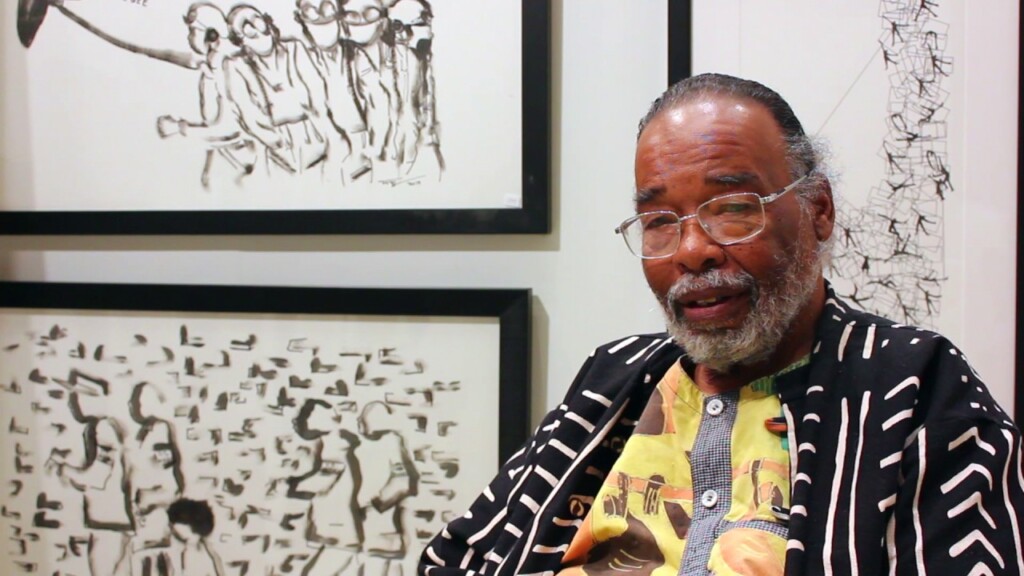Harlem born artist Frank Frazier will receive the “Arts Pioneer Award” for his more than 50 years of artistic excellence and social activism at Pigment International during Art Basel. The sculptor, painter, and collagist has served as a mentor and role model to generations of artists, gallerist and collectors. Frank began his work as a fine artist at the age of seven creating paintings in his family’s home and has grown to be quite a creative leader. We had the opportunity to speak with Mr. Frazier about art, his influences, and activism.
What influences your work?
Africa, Black history, and my grandchildren all influence my art.
What kind of topics does your art center around?
I am always a black artist! The civil rights movement and African culture are reflected in all of my work. We Black people must remember that it wasn’t easy to get from point A to B, and we made significant strides only in recent history in America, but we still aren’t entirely there yet. I understand why some artists don’t want to be called Black Artists and put into that box but Japanese and Chinese artists would never deny their heritage. In my lifetime I want to continue seeing more Black museums and galleries represent us unapologetically for who we are.
What inspired you to create the Southwest Black Fine Art show?
I was inspired by a need to bring Black Artists from around the country and also those locally in Texas together to let folks know that we exist. I think Dallas has some of the nicest museums in the country. The show is held at the African American Museum of Dallas, a real museum so that black artists can be exposed to that experience. It’s not the same as showing your work in a historic location converted to a museum, being in an official museum legitimizes us as Artists even to ourselves so that we can have confidence in our work.
You emerged through the Black Arts Movement in the 1980s. How important was this in creating a presence for black artists in the arts?
I emerged in the 70’s. My first show was in New York City in 1972, and then I went on a search to find other black artists, I found a few. Romare Bearden was one of them. I tried to get attached to him, but it was difficult being from the hood and it’s challenging to get your foot in the door because of the language barrier. I did artwork during one book show for Bearden in Roosevelt NY in the Art Workshop & Gallery Museum. I felt like successful Black Artists even when they want to truly help other Black Artists, may not have the time to uplift those around them, so my goal became to always help other Black artists no matter what. I learned to find the time, and I help them because it’s about the importance of getting their work to our children and our community.
What is the relationship between art and social justice today?
All artwork should deal with what’s going on in the universe at all times. Painting pretty scenery doesn’t do anything for the movement, I’m concerned about the movement. A lot of my work reflects what happened in the 60’s. I moved from New York City to Fayetteville North Carolina while in the service. Suddenly I was in a place where I was affected by Jim Crow, and I didn’t even know first hand that those restrictions on where I could go and what I could do really existed. Even in my uniform, I have been discriminated against down South, experiences I will never forget, and I don’t want this generation to forget them either.
How can art influence the community outside the art world?
When we black artists sell our artwork and become successful, we need to take some of that money and put it back into the community. At the end of the day, we need money to build, so we artists have a responsibility to uplift the people who really need it. Even those in our own neighborhoods.
Why is art important in activism?
Because art is the first thing, you see. When children go to school, the first thing they learn is colors, so images help dictate learning patterns. If you show the people what they need to see, changes can happen.
Learn more about Pigment international here




